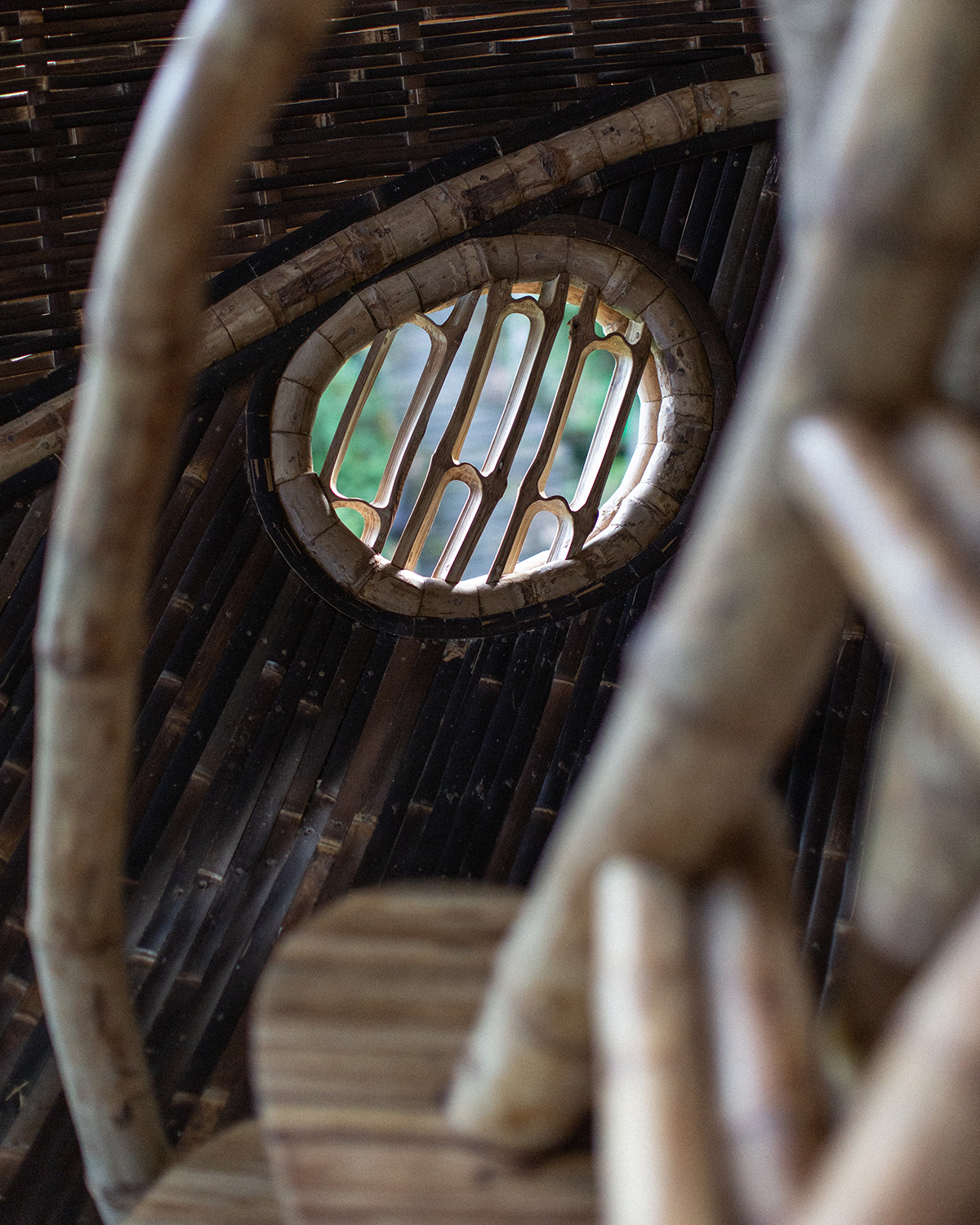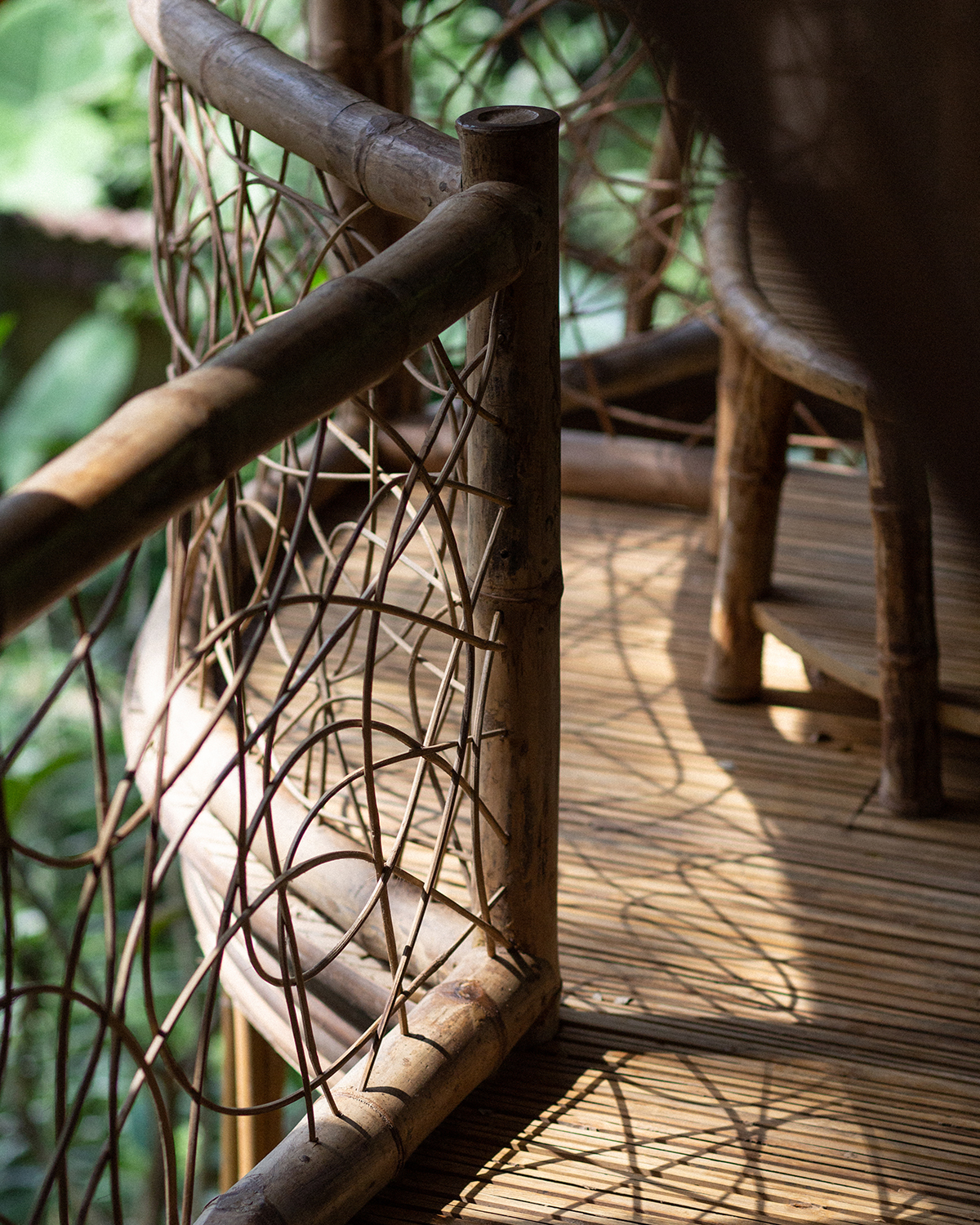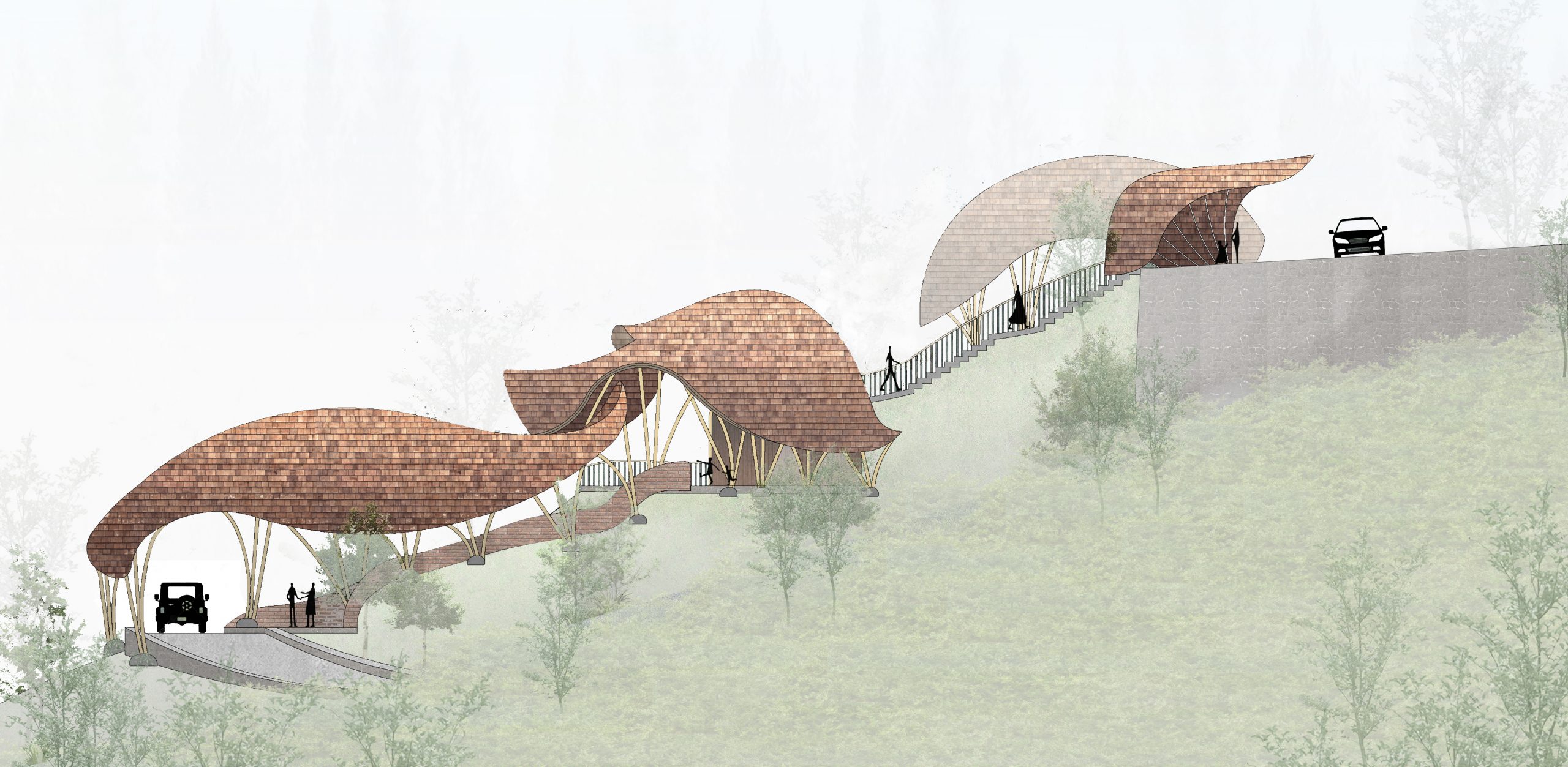INSPIRATION
Stronger than Steel?
The Bold Truth about Bamboo Architecture
Bamboo bends where others break. In Bali, architects and artisans are transforming this humble grass into bold, organic structures that rival steel in strength and surpass it in sustainability. From classrooms to luxury retreats, bamboo architecture is proving that resilience and beauty can grow from the same root.
OCTOBER 2025 • BY THE PUNCH EDITORS
As the world hardens its foundations, Bali’s architects listen to nature—building with bamboo that bends, breathes, and redefines what it means to be strong. In the heart of the island, morning light spills across a landscape of arches and honey-colored beams. What looks like sculpted wood is, in fact, grass–bamboo, polished and curved into forms that echo the rhythm of nature. Beneath these towering structures, the air feels alive. Children run barefoot across open classrooms; artisans sand and weave; architects sketch in soft pencil lines as cicadas hum in the distance.
Here, the sound of learning blends with the rustle of leaves. Classrooms rise organically from the ground–open, circular, breathing with the jungle. Each structure sways gently with the wind, built not to resist nature but to move with it.
Across the river valleys and rice fields, bridges and homes rise like waves frozen mid-curve. What once seemed fragile now stands as a testament to resilience, creativity, and the power of reimagined materials.
For centuries, bamboo has been part of daily life in Bali–used for scaffolding, tools, canopies, and ritual offerings. It has long been trusted by builders and farmers, yet only recently has it been redefined as a material worthy of architecture’s highest ambitions. Once seen as temporary and humble, bamboo is now known as the “green steel of the tropics,” capable of withstanding both time and typhoons. Its strength lies in its structure: long, fibrous strands that grant it incredible tensile power and the flexibility to bend without breaking. It grows abundantly, regenerating within three to five years without replanting, and leaves little waste behind when harvested responsibly.
In an age dominated by concrete and steel, bamboo offers a gentler counterpoint–a story of regeneration instead of extraction. Its resurgence on the island isn’t merely about building differently; it’s about rethinking progress altogether.


Across Bali, bamboo has evolved from a building material into a philosophy of living.
From the highlands of Tabanan to the riverbanks of Sibang, a new generation of architects, artisans, and builders is shaping spaces that breathe with the landscape. They carve, weave, and join each culm by hand, creating structures that curve like song and open seamlessly to the sky.
These designs merge ancient wisdom with modern technique. Spiraling staircases, vaulted domes, and homes that rise entirely from grass speak of an island unafraid to innovate while staying rooted in its traditions. Each beam carries not only physical strength but also cultural intention–the touch of the craftsman, the rhythm of the earth, the philosophy of balance.
Beyond aesthetics, this movement uplifts communities. Local artisans–many trained through family legacies of bamboo work–are now leading workshops and construction teams. Their hands, once busy with simple scaffolds and baskets, now shape architectural landmarks admired around the world. Through their craft, heritage becomes a living, evolving dialogue between culture and creativity.
A FUTURE WRITTEN IN GROWTH
The story of bamboo extends far beyond this island. Around the world, engineers and designers are exploring laminated bamboo beams, modular housing, and earthquake-resistant structures. What was once dismissed as primitive is now considered the blueprint for sustainable architecture.
In Bali, this evolution is already a living classroom. Schools, studios, and community projects use bamboo as both subject and teacher–demonstrating that true strength lies in renewal, not rigidity. The lessons stretch beyond construction; they remind us how to live lighter, to adapt, to endure.
To walk beneath these curved roofs is to witness nature in collaboration with human imagination. Every join, every arch, every polished node whispers a simple truth: resilience is not about defiance–it’s about flow. Bamboo teaches that we can grow back, bend with the wind, and still stand tall.
In a world built on permanence, these green pillars invite us to imagine something else: a future shaped by humility, harmony, and regeneration.

Source: Ibuku
GETTING INVOLVED
Visit Bamboo Learning Spaces: Join guided visits to community schools, studios, or village projects that use bamboo as both classroom and structure. Watch how natural materials and open-air design foster creativity and sustainability.
Stay in Bamboo Homes: Experience living architecture firsthand by staying in bamboo-built homes and eco-lodges scattered across Bali’s rivers and hills. Each structure offers a quiet lesson in how comfort, craftsmanship, and ecology can coexist.
Learn the Craft: Participate in workshops led by local artisans and builders who teach sustainable harvesting, design principles, and traditional joinery techniques. You’ll leave with more than skills–you’ll leave with perspective.
Support Sustainable Craftsmanship: Purchase handmade bamboo furniture or decor directly from small workshops and cooperatives. Each piece supports responsible sourcing, community livelihoods, and a circular design economy.
EXPLORE THE PUNCH

